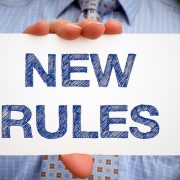Leaving Your Employer? Now’s a Great Time To Get Started in a Self-Directed IRA
If you’re leaving your employer after a long tenure – whether you are retiring or just making a mid-career change — a great opportunity to reshape your retirement plan. If you have a large balance at your workplace 401(k), SIMPLE IRA or other retirement plan, you may have options now that you didn’t have when someone else was in charge of your plan. The vast majority of workplace retirement plans do not allow beneficiaries to pursue Self-Directed IRA strategies or other forms of self-directed retirement investing.
Yes, 401(k) plans do support self-directed strategies. You can legally make any investments in a 401(k) that you can in a Self-Directed IRA.
When most corporations set up a retirement plan for their employees, self-directed retirement strategies just aren’t on the table. Most large corporations must design their 401(k) plans not to maximize the benefit and utility for their beneficiaries, but to minimize exposure to potential liability for themselves.
That means they don’t authorize many investments, such as self-directed retirement strategies, direct ownership of real estate, venture capital, private debt placement, tax liens and certificates and other unusual asset classes that they don’t understand or can’t control or blame on an investment company.
Here are your options if you have recently left or about to leave your employer:
- Leave your 401(k) assets in place. This has the advantage of simplicity, though some employers won’t let you keep your assets in your old plan, especially with smaller balances.
If you have a lot of company stock in your old 401(k) plan, there may be a tax advantage in keeping it in place as well.
The disadvantage is you may still be paying needlessly high 401(k) fees in lower-quality plans (though some well-designed plans have very low expenses), and you are restricted to a very narrow array of authorized investments in someone else’s plan. You also can no longer take out loans. If you establish your own self-directed 401(k) plan under your own control, you could roll your balance over into your own 401(k) plan, invest it in nearly anything you want, and design your plan so you can take loans from it.
- Roll your 401(k) assets into an IRA. You can generally do this by signing a couple of forms. The best way to do this, in most circumstances, via a direct trustee-to-trustee transfer, where your old plan liquidates your assets and wires the money directly to your newly established IRA account.
The IRA has several advantages over your old 401(k) plan.
- You have many more choices about how you want to invest your money.
- You have more access to your money, penalty-free, under certain hardship conditions.
- You can easily do a Roth IRA conversion and get tax-free growth on everything left in your account once you pay the income tax on the conversion. For maximum tax efficiency, pay the income tax with money that is not from a retirement account.
- You can easily set up a Self-Directed IRA by visiting americanira.com. This maximizes your investment flexibility, since most conventional investment companies do not allow you to invest retirement accounts in anything they don’t sell themselves. American IRA, LLC, allows you to take personal control of your retirement assets and invest them in things like real estate
The disadvantage: In the IRA, the early withdrawal excise tax applies up to age 59 ½. If you leave assets in your old 401(k), the tax only applies on withdrawals up to age 55 if you have separated from service.
- Take your 401(k) balance in cash. This is very tax-inefficient for most people, because you will be responsible for income taxes in the year in which you take the distribution. Your 401(k) custodian will automatically withhold 20 percent and forward it to the IRS in anticipation of this tax liability, so you don’t even get the benefit of the full withdrawal. Plus, you will have to pay an additional 10 percent on early withdrawal penalties, if applicable.
- Roll your old 401(k) into a new one. You can roll your 401(k) assets tax free into a new employer’s plan. If you are self-employed, or if you are an owner-employee of your own company, you can set up your own 401(k) plan, and design your plan documents however you wish. You can set it up for self-direction, you can have designated Roth accounts for tax-free growth, and you can design it to allow for 401(k) loans as an added source of liquidity for any purpose you like.
If you have no employees, or your only full time employees are yourself and a spouse, you may look into establishing a Solo 401(k). You may also consider a SEP, or simplified employee pension plan. Both plans will allow you to set aside much more money on a tax-advantaged basis than you could if you were relying on IRAs alone.
You can also roll your balance into a SIMPLE IRA at a new employer, but there is a two-year waiting period.
American IRA, LLC supports both the solo 401(k) and the IRA, and specializes in providing third party administration services for self-employed retirement account owners who choose to self-direct their retirement assets.
Here is a handy chart from the Internal Revenue Service that spells out all possible rollover options
Need help? We’d love to speak with you. Call American IRA, LLC directly today at 866-7500-IRA(472). Or visit our extensive library of informative articles, blog posts, brochures and e-books at www.americanira.com.
We look forward to speaking with you.







